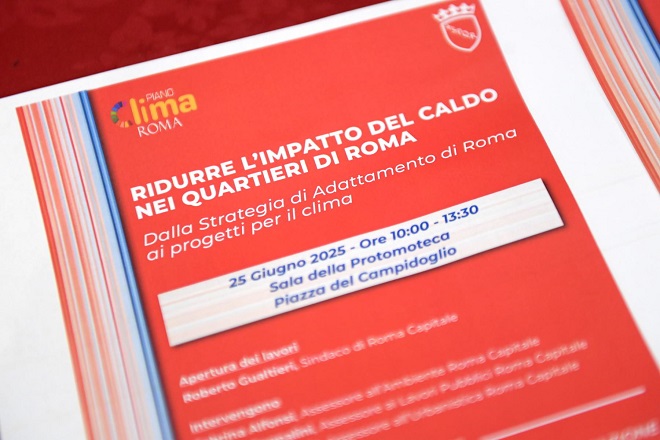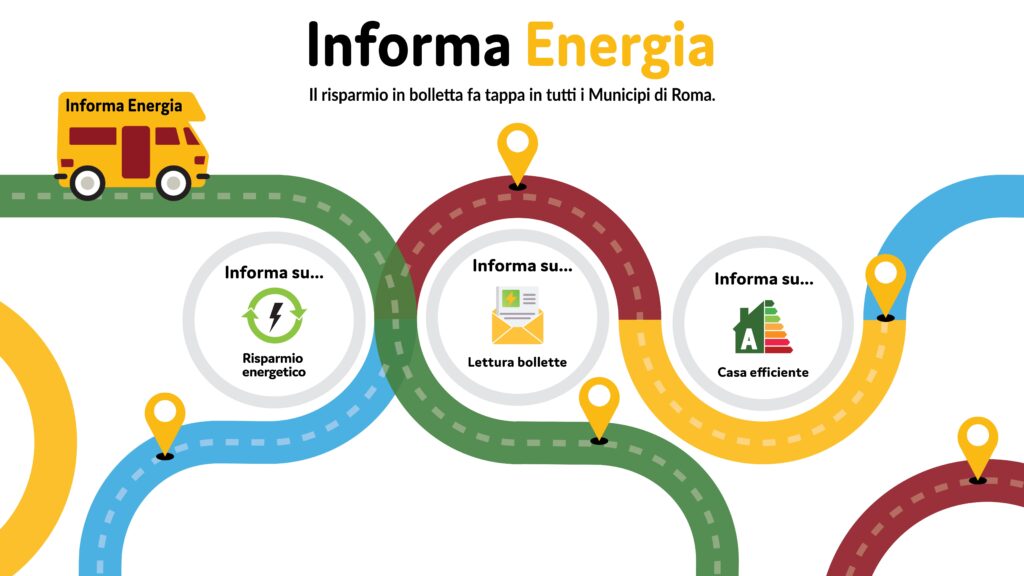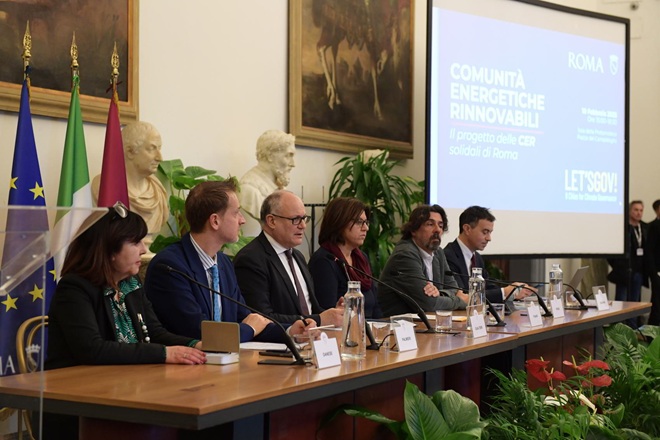Held today at the Capitol, the conference “Reducing the impact of heat in Rome’s neighborhoods. From Rome’s adaptation strategy to climate projects. “; an important moment of consideration of the climate challenge and a step towards the commitments made in the first Roma Capitale adaptation strategy approved by the Capitoline Assembly on January 14, 2025.
The first monitoring report was presented at the event. of the Adaptation Strategy, developed by the Euro-Mediterranean Center on Climate Change (CMCC), which showed significant data on the increase in heat in Rome in recent years. In particular, 2024 was the hottest year since 1991, with a significant increase in the number of days with severe thermal discomfort due to the combination of humidity and high temperatures.
The data presented in the report show an alarming trend toward rising temperatures, requiring an immediate and coordinated response from the Administration. Climate projections for 2050 are worrisome, with higher temperatures and an increase in temperature-related indicators in all climate scenarios analyzed.
The Capitoline Administration has already implemented numerous interventions and launched initiatives involving all directorates to reduce the impact of rising temperatures. Among the main goals:
Prevention both through communication to citizens but also through the implementation of a series of initiatives
These include the operation of five mobile tents, with the strengthening of the work of street units through the organization of 8 Jubilee campers, the establishment of a toll-free number 80095774 to request tele-assistance and telecompanionship. For people over 70, free admissions to 18 municipal swimming pools were made available; for minors, summer centers organized by municipalities were financed, in addition to trips to Castel Gandolfo. Initiatives to which is added the traditional Ferragosto lunch that last year involved about 2,500 people and this year will reach 3,000.
Strengthening the network of infrastructure and services
In Rome, the spread of public drinking fountains has grown–there are 3278 nosecones–and Acea’s Water Houses, which have reached 64 of which 11 were built with Jubilee funds. The new ACQUEA App has been created in three languages with locations where to find free drinking water. Part of this is the strengthening of bus shelters in the territory. A total of 435 will be installed between the center and suburbs. On the other hand, there are 90 kindergartens where the installation of cooling systems is underway, with an investment of 1.5 million euros, to ensure that spaces that even in June and July are frequented by children are cozy and cool. The number of roads being washed by Ama has been extended with the goal of reaching 12 thousand kilometers per month. For this purpose, 10 tankers have been purchased for street washing activities, 3 of which are already operational.
In addition, about 18,000 containers, or more than 40 percent of the road stations, have been washed and sanitized in the past two months.
Structural green redevelopment interventions
Rome has such a large and heterogeneous territory that in summer there can be even more than five degrees higher in some neighborhoods than in parks, going to aggravate the situation of thermal discomfort during heat waves. As a result, the Administration has moved forward with the planting of more than 30 thousand already large trees and 115 thousand younger plants of trees and shrubs, as well as the implementation of urban forestation interventions financed under the NRP, with special attention to the most vulnerable neighborhoods. The fifth overlook park along the Tiber was also inaugurated, in a project that is giving Romans back the chance to experience Rome’s river and benefit, especially in the evenings, from the coolness and generally enjoy beautiful and welcoming spaces. Plans for 21 new parks have also begun, at a cost of 63 million euros, as part of the 100 New Parks for Rome project.
Goals
These are some of the goals that the Capitol Administration will pursue:
- Present Rome’s first heat plan within the next year;
- Mapping public spaces with cooling systems to identify priorities for intervention;
- Create a network of climate shelters (indoor facilities and parks/gardens) to provide fresh air and services during heat waves;
- Involve all departments, departments and the scientific world in the work;
- Engage economic and social actors to find solutions through virtuous collaboration;
- Strengthen cooperation with other urban areas to replicate good practices.
The event
Speakers at the conference included Mayor Roberto Gualtieri, Councillor for the Environment Sabrina Alfonsi, Councillor for Public Works Ornella Segnalini, Councillor for Urban Planning Maurizio Veloccia and Edoardo Zanchini Roma Capitale climate office director.
Among the experts present were Giuseppe Napolitano Director of Civil Protection Department Roma Capitale, Paola Mercogliano CMCC Foundation, Paola Michelozzi Director of Epidemiology Department Asl Roma 1 SSR Lazio, Giulia Benati Autonoma de Barcelona , Stefania Argentini CNR, Alessandra Battisti La Sapienza University, Valerio Gori Pwc, Edoardo Annucci alderman for the environment of City Hall V, Elena Paudice La sapienza University, Claudio Mannarino alderman for the environment of City Hall VIII, and Michele Munafò service manager for the national environmental information system ISPRA.
“Dealing with heat waves and helping citizens is one of our priorities,” said Mayor Roberto Gualtieri, we have been working on it from day one to provide concrete responses to an increasingly evident phenomenon such as rising temperatures. We are planting a million trees in the city and there are many initiatives being carried out: road depavings, more pedestrian spaces, many parks, starting with those on the river, climate conditioning in kindergartens and senior centers, implementation of climate shelters, opportunities for the elderly and frail to go to swimming pools or to the beach for free, information on available water points and the health services to support them. The other crucial aspect is prevention and thus the strategy of reducing emissions to help stop climate change “
Therefore, it is now possible to consult CMCC’s Dataclime climate monitoring platform for Rome





